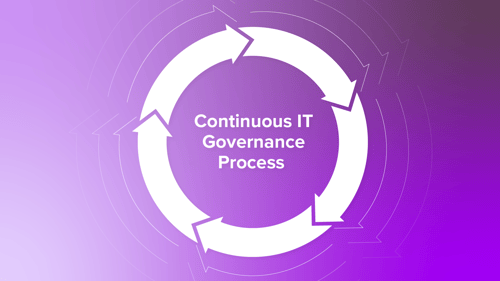It’s hardly news that organizational structures are changing and have been changing for some time. The traditional, hierarchical structures of yesteryear are being replaced by structures that focus on cross-organizational collaboration and empowering more decisions to be made by those outside of conventional leadership positions. So what’s behind this change, and what does it mean for the decision-making process?
The Problem With Over-Centralized Decision-Making
The sheer speed of change pushes organizations to democratize. In the digital age, it is simply becoming impossible to sustain the centralized decision-making models of old, and there is a wealth of evidence to support this.
In 2020, a study by McKinsey found that 70% of executives’ time is spent on making decisions under time pressure and with too little or the wrong kind of data.
When organizations try to maintain a centralized command-and-control model of decision-making, decision-makers are overwhelmed by the sheer volume of decisions they are asked to make. In addition, they often lack the insight and information needed to make these decisions effectively, and the speed they need to make these decisions keeps picking up.
To cope with the issue of limited bandwidth on decision-makers, digital organizations, in particular, have turned to new structures which delegate more decision-making responsibility throughout the organization.
The Rise of Fusion Teams and Business Technologists
One of these new structures is fusion teams, also known as the cross-functional product team. These teams are built to include all the roles and skills needed to deliver an end-to-end digital product or service. For example, such a team can include designers, developers, product managers, marketers, and researchers, among others. Often these teams have the power and resources to make technology decisions.
 With fusion teams, many more individuals outside traditional IT roles make decisions about systems without consulting with IT or the CIO’s approval. These digital age “business technologists” are strategic players, comfortable with technology, regularly changing and building the technological make-up of their organizations. They do this to meet the needs of their respective business units with speed.
With fusion teams, many more individuals outside traditional IT roles make decisions about systems without consulting with IT or the CIO’s approval. These digital age “business technologists” are strategic players, comfortable with technology, regularly changing and building the technological make-up of their organizations. They do this to meet the needs of their respective business units with speed.
However, the existence of business technologists further complicates the decision-making process. While more people are empowered to make decisions, they still lack a thorough understanding of the organization beyond their domains. This means no oversight of the implications of their decisions on other teams and processes within the same organization.
The original issue of insufficiently informed decision-makers has not been solved, merely spread out by these new cross-organizational collaboration structures and roles.
The Fundamental Need to Make Informed Decisions
The people with architectural insight and overview don’t have the capacity to be involved in every single decision, while decision-makers lack full access to the information they need when they need it. Internal and external enterprise ecosystems have become so complex that it’s safe to assume that no one within them has perfect information for effective cross-organizational collaboration. So these new forms of distributed teams suffer from the same challenges as traditional leadership. The delegation of decisions can only be effective if people know which decisions ought to be distributed.
The fundamental need to make informed decisions remains unmet and the solution elusive. Yet, this universal problem is precisely where the strengths of Enterprise Architecture offer a brave new way forward. For an in-depth look at how Enterprise Architecture aids the decision-making process read Enabling Democratized Decision-Making in the Digital Organization.
The Role of EAs in Effective Democratization of Decision-Making
This growing demand within enterprises for data and insight presents a massive opportunity for EAs whose domain holds that vital clear overview needed for decisions. However, to fully realize the potential of this situation, Enterprise Architects will need to challenge their mental approach toward their role, the assumptions about how EA should function, and the types of tooling being used.
The most common concept of the Enterprise Architecture tool was conceived in the 1990s, engineered for another generation’s needs and vastly different ways of organizing. Unfortunately, that tool adapts poorly to current shifts in organizational structures and the growth in decision-makers. Many of today’s EA platforms and approaches are geared toward the technical user and inaccessible to non-technical users. A considerable step up in specific EA expertise is required even to begin accessing the architecture, keeping insights from the people who need them most, the decision-makers.
Rather than gatekeeping and maintaining data warehouses, EAs and their tools need to focus on facilitating cross-organizational collaboration and democratization. This makes them relevant and critical to their organization’s ability to make informed decisions at speed.
Learn more about how to:
- evolve the EAs role within the organization, to become facilitators of democratization
- make valuable EA insights accessible and easy to use, enabling the digital organization of today to make impactful data-driven decisions at every level

 Deborah Theseira
Deborah is a Senior Content Specialist at Ardoq. She wields words in the hope of demystifying the complex and ever-evolving world of Enterprise Architecture. She is excited about helping the curious understand the immense potential it has for driving effective change.
Deborah Theseira
Deborah is a Senior Content Specialist at Ardoq. She wields words in the hope of demystifying the complex and ever-evolving world of Enterprise Architecture. She is excited about helping the curious understand the immense potential it has for driving effective change.



/Logos/Ardoq/RGB_Ardoq_Logo_Stacked_White_Monochrome%201.png?width=80&height=77&name=RGB_Ardoq_Logo_Stacked_White_Monochrome%201.png)

